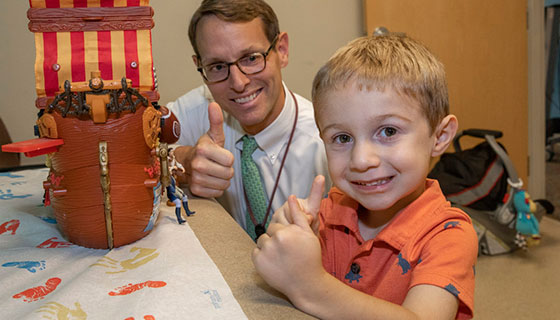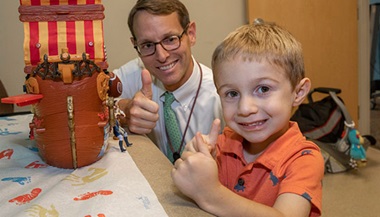Chondroblastoma
What is chondroblastoma?
A chondroblastoma is a rare type of noncancerous bone tumor that begins in cartilage. This is the specialized, gristly connective tissue from which most bones develop. It plays an important role in the growth process. There are many different types of cartilage in the body. Chondroblastoma most often affects the ends of the long bones, near the growth plate, in the arms at the shoulder, and in the legs at the hip and knee. It is also called Codman’s tumor.
Chondroblastoma can affect people of all ages. But, it’s most common in children and young adults. It’s also more common in males than females.
What causes chondroblastoma?
The exact cause of chondroblastoma is not known. The tumors are believed to start from immature cartilage producing cells called chondroblasts.What are the symptoms of chondroblastoma?
Symptoms of chondroblastoma may vary depending on the location of the tumor. The following are the most common symptoms:
- Pain in the knee, hip, and shoulder joint (pain may be slight or moderate and may be present for months or years)
- Withered or shrunken appearance of the muscle near the affected bone
- Impaired mobility of the adjacent joint
- Fluid buildup in the joint next to the affected bone
The symptoms may look like other medical conditions or problems. Always talk with your healthcare provider for a diagnosis.
How is chondroblastoma diagnosed?
In addition to a complete medical history and physical exam, other tests may include:
- X-rays. A test that uses invisible electromagnetic energy beams to produce images of internal tissues, bones, and organs on film.
- Magnetic resonance imaging (MRI). A procedure that uses a combination of large magnets, radiofrequencies, and a computer to produce detailed images of organs and structures within the body. This test is done to rule out any associated abnormalities of the spinal cord and nerves.
How is chondroblastoma treated?
The goal for treatment of chondroblastoma is to remove the tumor and prevent damage to the end of the affected bone. Treatment may include:
- Surgical removal of the tumor
- Bone grafting. A surgical procedure in which healthy bone is transplanted from another part of the body into the affected area, if necessary, to repair damaged bone.
- Reconstruction or replacement of an affected joint
- Physical therapy to restore strength and function after surgery
The tumor may recur. For this reason, follow-up with your healthcare provider is essential.
Key points about chondroblastoma
Chondroblastoma is a rare type of noncancerous bone tumor that starts from cartilage. It most often affects the ends of the long bones, near the growth plate, in the arms at the shoulder, and in the legs at the hip and knee. It is more common in children and young adults affecting males more than females.
- The exact cause of chondroblastoma is not known.
- Symptoms may vary depending on the location of the tumor.
- Pain in the knee, hip, and shoulder joint
- Withered or shrunken appearance of the muscle near the affected bone
- Impaired mobility of the adjacent joint
- Fluid buildup in the joint next to the affected bone
- The goal for treatment is to remove the tumor and prevent damage to the end of the affected bone.
Next steps
Tips to help you get the most from a visit to your healthcare provider:- Know the reason for your visit and what you want to happen.
- Before your visit, write down questions you want answered.
- Bring someone with you to help you ask questions and remember what your provider tells you.
- At the visit, write down the name of a new diagnosis, and any new medicines, treatments, or tests. Also write down any new instructions your provider gives you.
- Know why a new medicine or treatment is prescribed, and how it will help you. Also know what the side effects are.
- Ask if your condition can be treated in other ways.
- Know why a test or procedure is recommended and what the results could mean.
- Know what to expect if you do not take the medicine or have the test or procedure.
- If you have a follow-up appointment, write down the date, time, and purpose for that visit.
- Know how you can contact your provider if you have questions.






